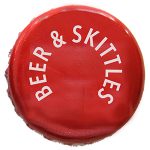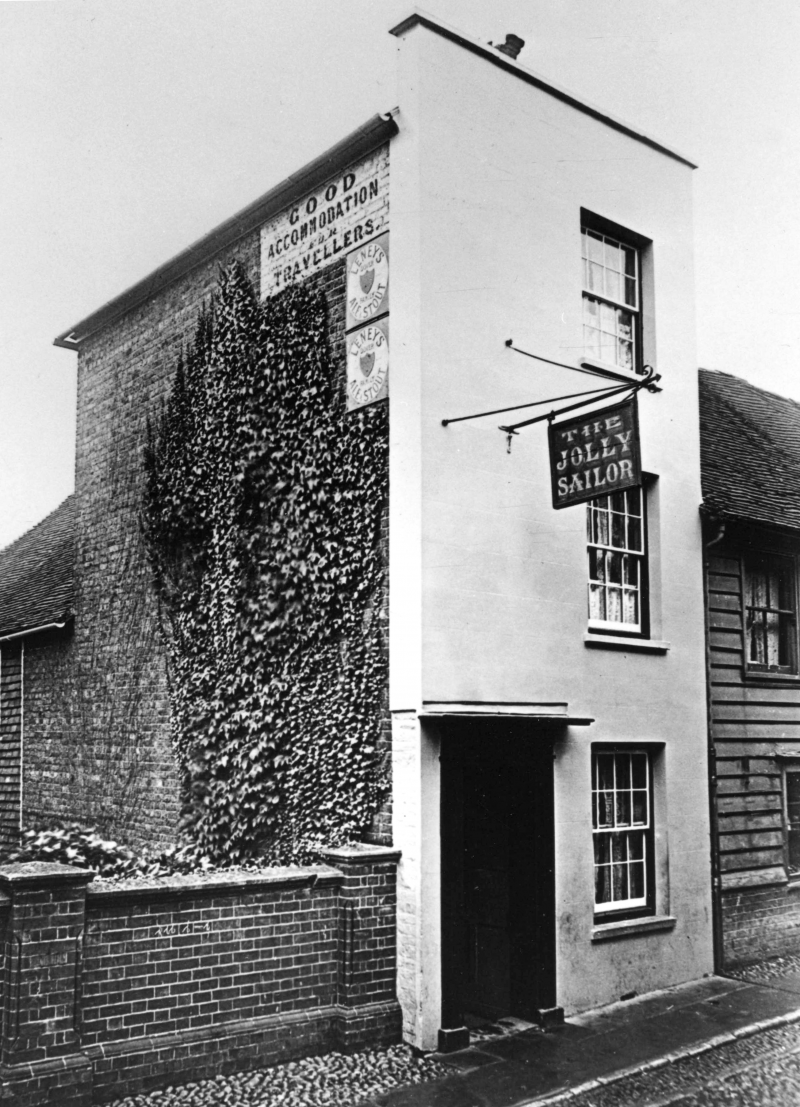The Jolly Sailor in Watchbell Street first opened in 1830 and got a full licence in 1832 supported by local vicar John Myer who was Rye mayor in 1828.
But within 10 years it had become a common lodging house for poor travellers and itinerants. On census night 1841 the Jolly Sailor had 11 lodgers. As well as the landlady and her two children, the lodgers were a shoemaker’s family of four, two cap makers, a weaver, a painter, an agricultural labourer and two ‘”independent” women, aged 25 and 26 years old.
“The Jolly Sailor”, said Peter Ewart, “was no ordinary tavern. It was patronised by the roughest elements and its interior was the scene of many sinister doings during its comparatively short history.” Even when closed it traded fish, eels, pork and vegetables, direct from its back gate to the inhabitants of Hucksteps Row and beyond. It also sold porter and beer from the back door carried away by the locals in earthenware jugs.
Complaints about customers were regular and continuous. The police described them as “gypsies, hop pickers, rag and bone collectors and those who go mushrooming on the marsh”. The pub also provided accommodation for the street entertainers who visited the town in large numbers during the second half of the 19th century. This group included the owners of dancing bears, one man bands and other street musicians. While their owners slept the bears were chained in a shed at the rear.
It was often accused of overcrowding. One story claimed the pub used a system of taut ropes slung across a room at chest height, for lodgers to drape themselves over in order to sleep. They were woken up in the morning by the landlady slackening the ropes!
Many an incoming landlord was advised of the difficulties he might encounter.
“This house requires a great deal of supervision. You must be careful in the manner in which it is conducted.” But in 1910 the Jolly Sailor was closed down.
Twenty years later Adams Guide to Rye informed its readers about “another abandoned inn – perhaps the most sinister to a bygone generation – the Jolly Sailor, which, could its walls speak, unfold tales as sordid and crime stained as many associated with the doss houses of the Bowery. Many a person I remember being hailed from the brick floored, smoky taproom, or sparsely furnished and cheerless upper chambers, where the tramping fraternity certainly encountered some strange bed fellows.”
“In my mind’s eye”, said the writer, “I still see the typical landlord seldom without his churchwarden (clay pipe), standing at the threshold of his pub bidding welcome to all and sundry. The spartan accommodation was regarded as much superior to the alternative of passing the night in Rye workhouse.” The original building, now a private house, still stands and portrays feint signage from its pub days of over a century ago.
The Pubs of Rye, 1750-1950 by David Russell is available from The Rye Bookshop, 25 High Street; the Heritage Centre, Strand Quay; Adams, 9 High Street, or online . Other books by David Russell are The Pubs of Hastings & St Leonards, The Pubs of Lewes, The Swan, Hastings and Register of Licensees for Hastings & St Leonards.
Photo: John Hodges



